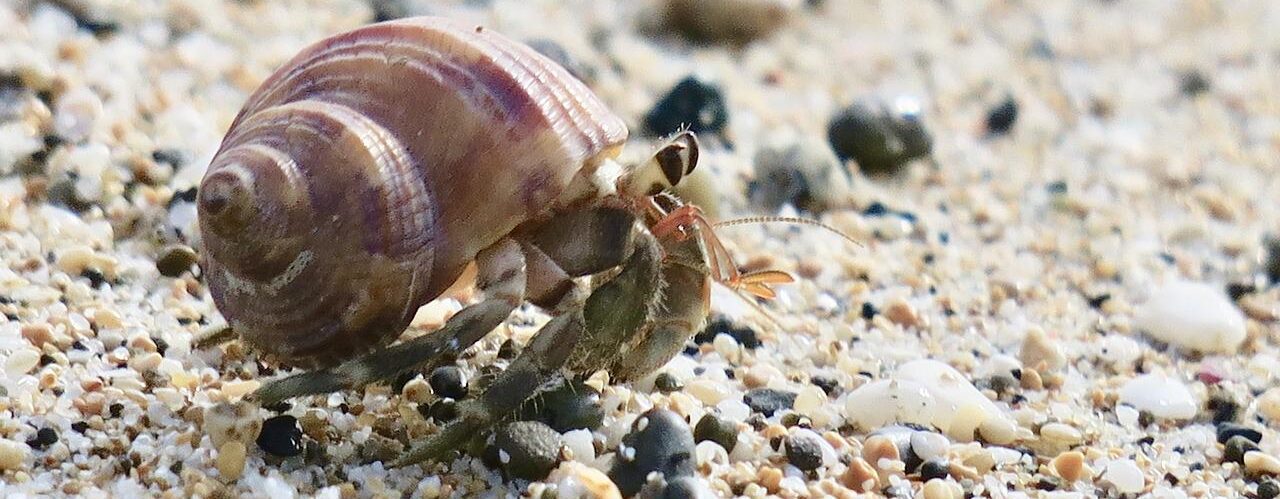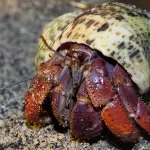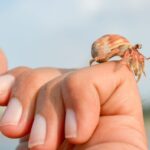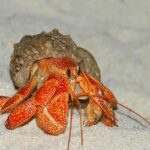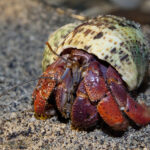Hermit Crabs are very friendly and social animals. As with any pet, getting started with hermit crabs involves having supplies on hand prior to bringing them home. In some cases, one might purchase a hermit crab at a fair or a local store. Even in such cases, ensuring that the habitat is set up soon thereafter will ensure that the health of your new pet.
In our Getting Started guide, we will focus on setting up the habitat for your hermit crabs. This has been called one of the most important steps to ensure the health and a long life for your hermit crabs. So what exactly do you need? Well, let’s get started.
Please note that this page contains affiliate links. If you use these links to buy something we may earn a commission. Thanks.
Full List of Items Needed
Here is the full list of items needed for your crabitat. Below, we go more into detail about each item.
[table id=1 /]
Hermit Crab Tank/Enclosure
At the time of purchase, hermit crabs might come in small enclosures simply meant for transport. However, to ensure that your hermit crabs have adequate room, it is important to invest in a proper tank. At a minimum, the tank should be ten gallons. This is big enough for two decent sized crabs. This is good for two reasons:
- A good rule of thumb is that there should be five gallons of tank space for each hermit crab. A ten gallon tank supports that rule for two hermit crabs
- Since hermit crabs are social animals, it is recommended to buy at least two. This will keep them happy and social.
In addition to having a five gallon tank, there should be a mesh or specialized top. In our hermit crab journey, we have used a combination of two tops. We started off with a mesh top, but ultimately switched to a glass canopy as this did a better job regulating the temperature and humidity. The tank itself should be placed away from windows, direct sunlight, and air vents as this can be damaging for hermit crabs.
Substrate
The next thing is to set up substrate or sand in the tank. Hermit crabs like to dig and when they molt, they bury themselves in the substate. So having the right amount of substrate is very important. A good rule of thumb is to add 3-4 times the height of the crab. We’ve found 6 inches of substrate to be a good height for most cases.
When choosing a substrate, keep in mind that more is needed than just sand. The proper substrate contains elements of coconut, probiotics, and other fibers to mimic their environment in the wild. This is essential for the health of the hermit crab
Food and Water Bowls
Within the tank, you will need three bowls: two for water and one for food. The bowls should be deep enough for the hermit crabs to get in and submerge themselves as needed. Let’s first talk about water bowls in more detail.
The two water bowls are for freshwater and saltwater. Both water types need to be dechlorinated using a conditioner as this is needed for the well-being of the crabs. Chlorine is very toxic to hermit crabs. Follow the directions on the bottles closely! Be sure to purchase:
- Salt Water Conditioner -adds calcium, aids in molting, hardens crabs exoskeleton, and remove chlorine and ammonia
- Drinking Water Conditioner – adds electrolytes, calcium, removes chlorine and chloramines, and removes ammonia.
For the deeper water bowls, use of a sponge is highly recommended. The sponges contain extra nutrients such as chitin and bits of natural shells that crabs will eat for calcium are beneficial for their exoskeleton. These are also essential for helping the crabs get in and out of the water bowl.
Hermit Crab Accessories
One of the things that you will love about the hermit crabs is that they are very active. They are often found climbing and digging. It is helpful to give them a variety of things to do in their habitat. Things like driftwood, moss, half logs, and leaves make for a good habitat for healthy crabs. Not to be overlooked are additional shells that are bigger than their current shells. Hermit crabs will change shells eventually and having extra shells in the tank will make this a less stressful time for them.
Temperature and Humidity
Hermit crabs are ectotherms. This means that they are dependent on external sources of body heat. Hermit crabs thrive in a habitat that is between 75 to 85 degrees. Humidity is also very important. This helps the crabs regulate the moisture of their bodies. The target humidity should be around 65-80 percent. The preferred way to ensure this temperature is using a heater on the tank. Some might prefer to put it underneath or on the side. Position doesn’t matter in this case.
To ensure that both the temperature and humidity is right, it is best to get a thermometer for the side of the tank. The marks on it will let you know when you need to adjust either the temperature or humidity.
Food
Hermit crabs eat both plants and animal matter. They need calcium-rich diet to strengthen their exoskeleton. Plus, they will eat just about anything. So a nice mixture in their diet will keep them, not only healthy, but happy. We’ve come to appreciate when food our crabs like more than others. Feed them at night as this is when they are most active. In the morning, be sure to empty their food bowl as the food can spoil.
We hope this Getting Started guide will help you in caring for your hermit crabs. Hermit crabs can live for many, many years with proper care. So taking the time to learn more about them and keeping their habitat optimal will ensure a healthy crab.
Please check out our Hermit Crab Checklist for a condensed list of items needed for your hermit crab.
